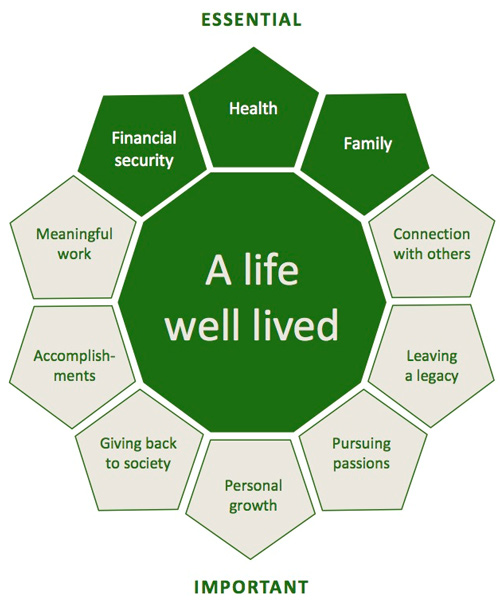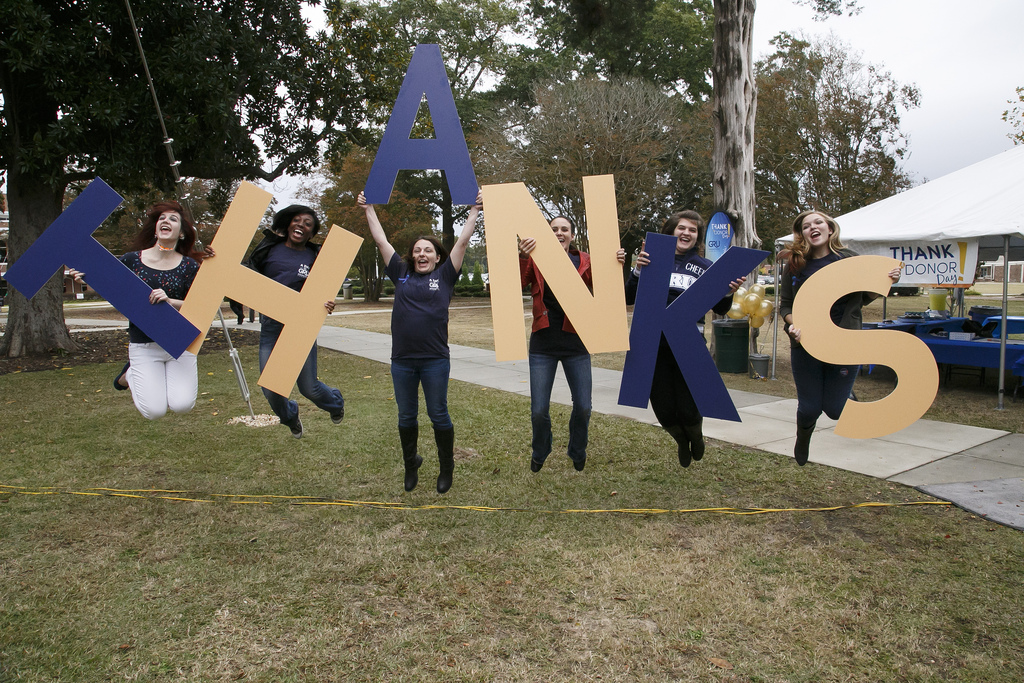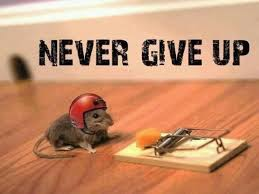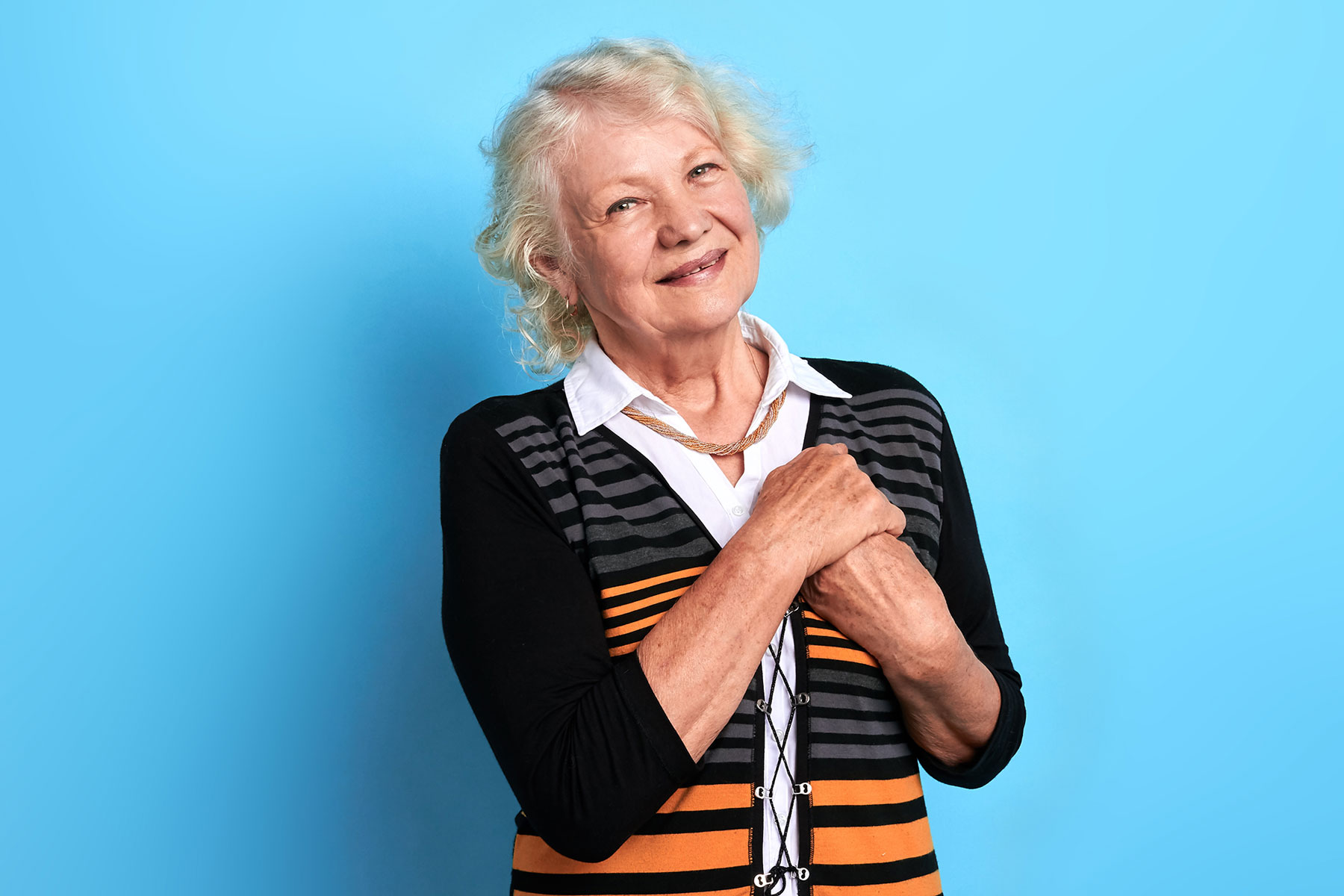Last year, Bank of America asked their high net worth clients what was important to them. The answer that came back was not surprising to Jeff and me. It boils down to two big areas:
- Essential: Health, family and financial security.
- Important: Connectedness, personal growth and making a difference in the world.

Take a look at the details in the graphic above, which comes from that same study. It’s a no-brainer that health, family and financial security are the essential elements of a life well-lived. But take a look at the other important points and the theme that runs through them:
- Connection with others
- Leaving a legacy
- Pursing passions
- Personal growth
- Giving back to society
- Accomplishments
- Meaningful work
Mostly, this list shows that these people want to do things that really matter. Sure, you could argue that “pursuing passions” could mean buying that big yacht and boating, or “accomplishments” could mean something related to building another company or making money.
But my interpretation of the list, coupled with my experience, is that most everything that matters to these people is that they make a difference – to do something that matters. He or she has made money and accomplished achievements – now it is time to make an impact.
That is why it is so important to give immediate and thorough feedback on donor giving – every time they give a gift, and even when they don’t. It is so interesting to me that the many thank-you systems Jeff and I see in the non-profit world are tied to and reacting to a gift. The donor gives a gift, and that is the magic button that starts the thank-you engine internally.
This is so terribly wrong, especially in major gifts.
Giving information to your caseload donors should happen all the time, not just when they give. If you just give info when the donor gives, you are affirming that all that matters is their gift – you are saying that the core thing they mean for the gift to accomplish, i.e. making a difference on the planet or in someone’s life, doesn’t really matter. Quite frankly, just thanking and talking back when the gift comes in is sort of like saying, in a socially acceptable way: “Hey, thanks for the money. Talk to you when you give again! Don’t expect anything until then.” This is harmful to the relationship.
Take a look at how the thanking process is happening in your organization. And leave a comment for me if your process is anything more than (1) the gift arrives and (2) the thank-you goes out. Sure, you’ll throw in a newsletter or something like that, every once in a while. But do this: take ONE donor on your caseload and put yourself in her place. Then sit back and pretend you’re receiving what you are planning to send them. Sit in your chair and receive that communication. Think about the timing. Evaluate the content. Examine how you FEEL about it.
Is it satisfying? Does it meet your need to make a difference? Is it right on target with your passions and interests? Does it really communicate that making a difference is important? Or is it just transactional? I would really like for you to feel what your donor is feeling when they receive your communications.
Try this. You may be enlightened about the gaps in your communication strategy and the focus of your messaging.
I know, you don’t have the time and money to do more. OK – then be prepared for major donor attrition and the perpetuation of a culture that really doesn’t care about donors.
Your donors are just like you. They want to make a difference. I hope you are helping them do it.
Richard
Read the whole series:







Richard thank you for this article. I absolutely believe in showing our donors the impact of their giving over and over again. Yes it’s very important to thank but showing them the wonderful things they are doing is the meat and potatoes. Those stories are what will keep them full of love for our organization, mission and people (or in my case animals!). We are implementing a very involved stewardship program this year and I cannot wait to show off the results of retention, accusation and engagement of our donors next year. Viva la 2016!